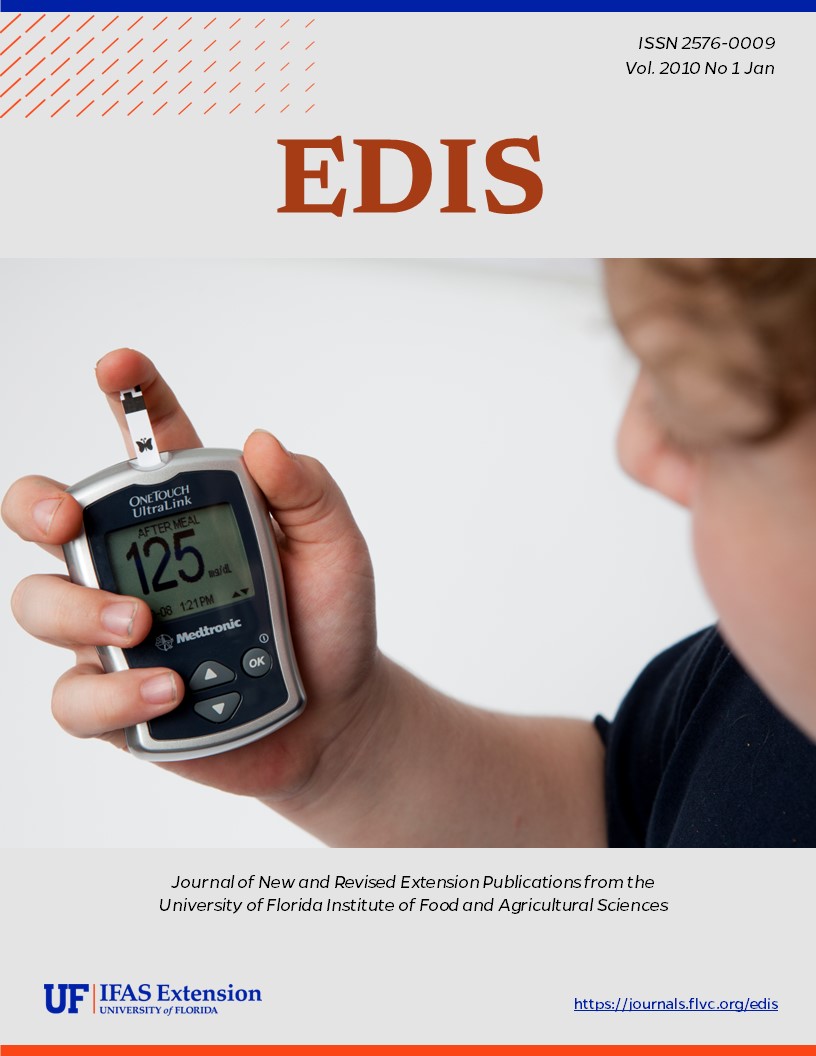Abstract
Revised! SS-AGR-86, an 8-page fact sheet by A. M. Fox, D. R. Gordon, J. A. Dusky, L. Tyson, R. K. Stocker, K. A. Langeland, and A. L. Cooper, provides a history, justification, and summary of the IFAS Assessment of Non-Native Plants in Florida’s Natural Areas. Includes references. Published by the UF Department of Agronomy, November 2009.
References
Fox, A. M., D. R. Gordon and R. K. Stocker. 2003. Challenges of reaching consensus on assessing which non-native plants are invasive in natural areas. HortScience 38(1): 11-13. https://doi.org/10.21273/HORTSCI.38.1.11
Gordon, D.R., D.A. Onderdonk, A.M. Fox, and R.K. Stocker. 2008a. Accuracy of the Australian Weed Risk Assessment system across varied geographies. Diversity and Distributions 14: 234-242. https://doi.org/10.1111/j.1472-4642.2007.00460.x
Gordon, D.R., D.A. Onderdonk, A.M. Fox, R.K. Stocker, and C. Gantz. 2008b. Predicting Invasive Plants in Florida Using the Australian Weed Risk Assessment. Invasive Plant Science and Management 1: 178-195 https://doi.org/10.1614/IPSM-07-037.1
Hiebert, R.D. and J. Stubbendieck. 1993. Handbook for ranking exotic plants for management and control. U.S. Dept. of Interior Natural Resources Report NPS/NRMWRO/NRR-93/08. Available online: http://nature.nps.gov/pubs/ranking/
Langeland, K.A., H.M. Cherry, C.M. McCormick, and K.A. Craddock Burks. 2008. Identification and Biology of Non-Native Plants in Florida's Natural Areas. 2nd ed. Gainesville: IFAS Communications Services, University of Florida Publications. Publication SP 257. 193 p.
Lippincott, C. 1996. Current estimates of cultivated, native, naturalized, and weedy plant species in Florida. Florida Exotic Pest Plant Council Newsletter Summer 1996, Vol 6. No 3, p. 3.
Parker, C., Caton, B.P. and L. Fowler 2007. Ranking nonindigenous weed species by their potential to invade the United States. Weed Science 55: 386-397. https://doi.org/10.1614/WS-06-168
Pheloung, P.C, P.A. Williams, and S.R. Halloy. 1999. A weed risk assessment model for use as a biosecurity tool evaluating plant introductions. Journal of Environmental 57: 239-251. https://doi.org/10.1006/jema.1999.0297
Reichard, S.H. and C.W. Hamilton. 1997. Predicting invasions of woody plants introduced into North America. Conservation Biology 11:193-203. https://doi.org/10.1046/j.1523-1739.1997.95473.x
Vitousek, P., L. Loope, C. D'Antonio and S.J. Hassol. 1995. Biological invasions as global change. pp. 213-336 In: S.J. Hassol and J. Katzenberger (eds) Elements of change 1994. Aspen Global Change Institute, Aspen, CO.
Tucker, K.C., and D.M. Richardson. 1995. An expert system for screening potentially invasive alien plants in South African fynbos. Journal of Environmental Management 44: 309-338. https://doi.org/10.1016/S0301-4797(95)90347-X
Wilcove, D.S., D. Rothstein, J. Dubow, A. Phillips, and E. Losos. 1998. Quantifying threats to imperiled species in the United States. Bioscience 48:607-615. https://doi.org/10.2307/1313420

